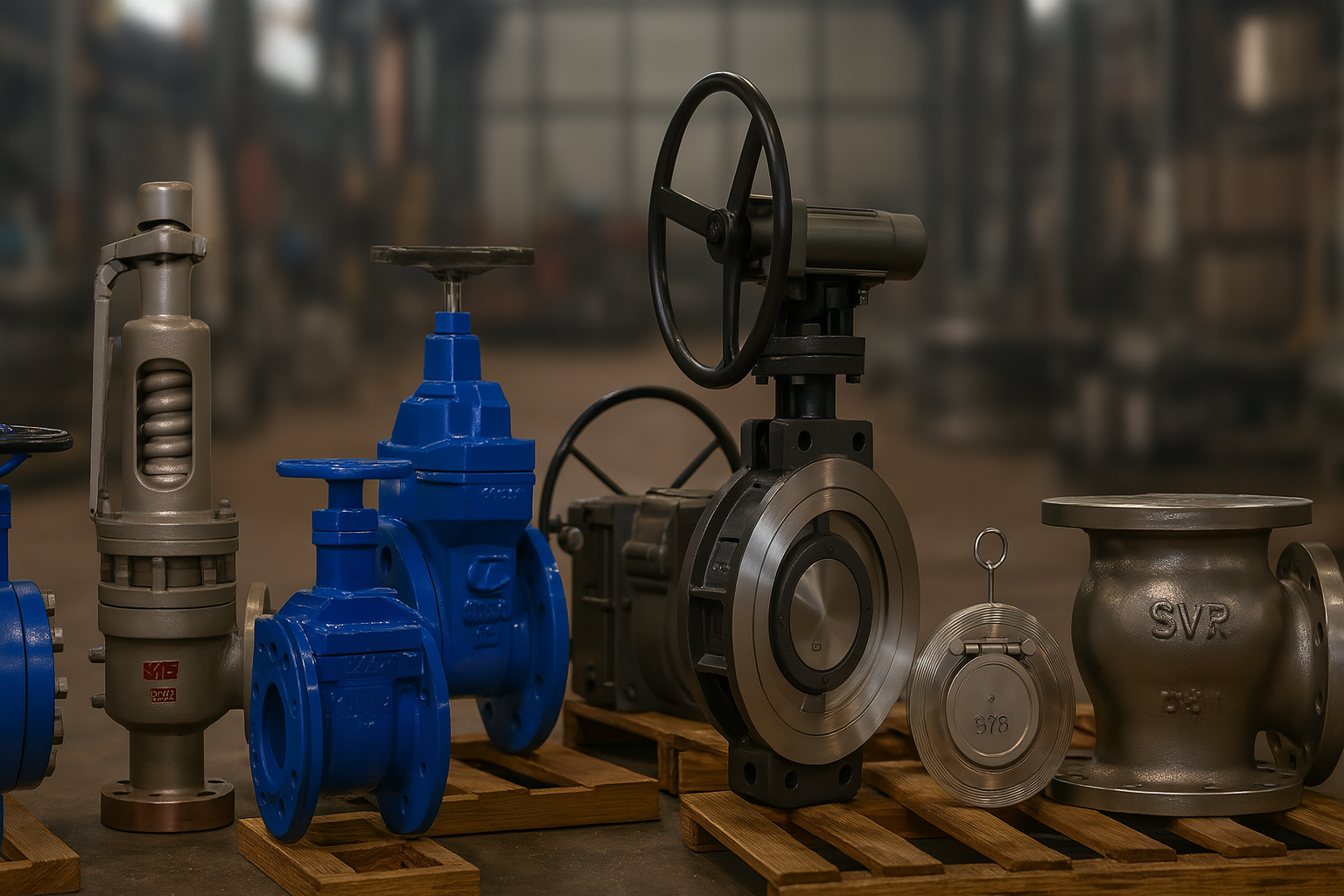
Blog
Ball Valve vs. Globe Valve: What’s the Difference?
Selecting the right valve is crucial when controlling the flow of liquids or gases in pipelines. In the Middle East, where industries such as oil and gas, petrochemicals, and water treatment are vital, choosing the right valve can make all the difference in ensuring efficient and safe operations.
Middle East Valve, a leading supplier in the region, provides a wide range of valves designed to meet the unique demands of these sectors. Among their offerings, ball valves and globe valves are two of the most commonly used types. However, they serve different purposes and have distinct features. This blog will explore the key differences between ball and globe valves, helping you understand which is the better option for your needs.
What Are Ball Valves and Globe Valves?
Before diving into their differences, it is essential to understand what ball valves and globe valves are.
1)Ball Valves: Efficient and Quick Shut-Off
Ball valves are quarter-turn valves that use a hollow, perforated, and pivoting ball to control the flow of fluid. When the ball’s hole is aligned with the flow, the valve is open; when the hole is perpendicular, the valve is closed. Due to their design, ball valves offer a simple and effective way to quickly shut off flow or allow it to pass.
2)Globe Valves: Precision in Flow Control
In contrast, globe valves are linear motion valves used to start, stop, and regulate flow. The design consists of a movable disc or plug and a stationary ring seat. When the handle is turned, the plug moves up or down, opening or closing the flow passage. Globe valves are known for their precision in throttling and controlling flow, which is why they are widely used in situations requiring accurate flow control.
Key Differences Between Ball Valves and Globe Valves:
Now that we have a basic understanding, let’s explore the key differences between these two types of valves.
Design and Structure
The most apparent difference between ball valves and globe valves is their design. Ball valves have a spherical disc that controls the flow, while globe valves have a plug and seat arrangement. Because of this structural difference, ball valves provide a straight flow path with minimal resistance. Conversely, globe valves are designed for a more tortuous flow path, which results in higher pressure drops.
Operation Mechanism
Ball valves operate with a simple quarter-turn (90-degree) motion, allowing for quick opening and closing. This feature makes them ideal for applications requiring rapid shut-off. In contrast, globe valves require multiple turns to open or close, making them better suited for applications where throttling or precise flow regulation is necessary.
Flow Control Capability
When it comes to flow control, globe valves have a clear advantage. They provide better control over the flow rate due to their adjustable disc and seat arrangement. Conversely, ball valves are not ideal for flow regulation; they are primarily designed for shut-off purposes. Using a ball valve for throttling can cause damage to the ball and the seat over time, reducing its lifespan.
Durability and Maintenance Requirements
Ball valves are generally more durable and require less maintenance compared to globe valves. The straightforward design of ball valves results in fewer components that can wear out. Moreover, ball valves are less susceptible to damage from debris in the pipeline, while the internal parts of globe valves can be affected by particles, leading to frequent maintenance needs.
Pressure Drop and Efficiency
Globe valves typically have a higher pressure drop due to their design. The tortuous path of the fluid in a globe valve causes significant resistance, resulting in a drop in pressure. On the contrary, ball valves offer a minimal pressure drop because the fluid flows in a straight line when the valve is open, maintaining higher efficiency in the system.
Applications in Industry
The specific applications of ball valves and globe valves also highlight their differences. Ball valves are perfect for applications requiring a tight shut-off, such as gas pipelines, water distribution systems, and other scenarios where leak-tight service is critical. In contrast, globe valves are more suitable for applications where flow regulation is necessary, such as in steam lines, fuel oil systems, or chemical processes.
Choosing the Right Valve for Your Application:
Now that we have discussed the key differences, how do you decide which valve is right for your application?
Consider the Purpose
If your primary need is to shut off flow quickly and efficiently, a ball valve is the better choice. However, if you require precise control over the flow rate, a globe valve will serve your needs better.
Evaluate the System Requirements
Think about the pressure and temperature conditions in your system. For low-pressure systems where fast operation and minimal maintenance are needed, ball valves are ideal. Meanwhile, globe valves are preferable for high-pressure systems or those involving high temperatures, where flow control is critical.
Analyze the Flow Characteristics
If your system requires a straight-line flow with minimal pressure drop, a ball valve is more suitable. On the other hand, if your system involves regular throttling or flow regulation, a globe valve should be your go-to option.
Conclusion:
In conclusion, both ball valves and globe valves have unique features, benefits, and limitations. The choice between them depends largely on the specific requirements of your application, including factors like flow control, pressure drop, durability, and maintenance needs. By understanding the key differences between ball valves and globe valves, you can make a more informed decision and ensure the efficiency and safety of your system.

